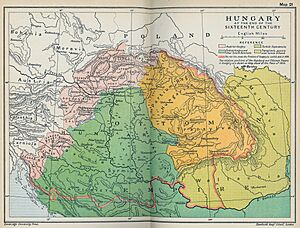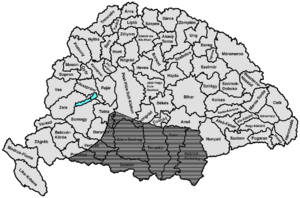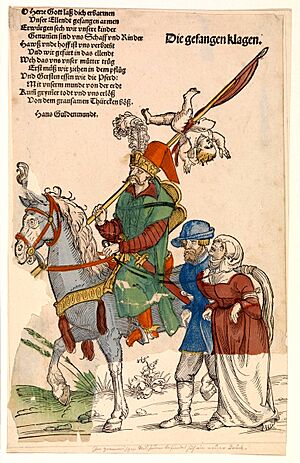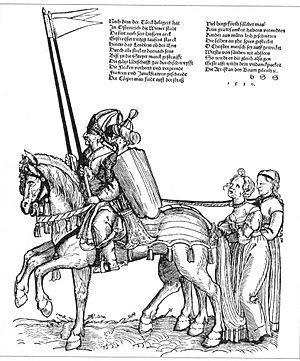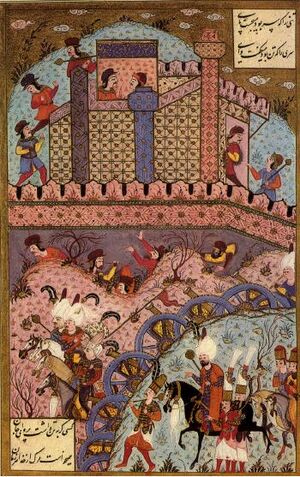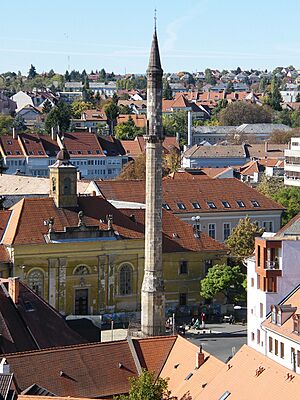Ottoman Hungary facts for kids
Quick facts for kids
Ottoman Hungary
Török hódoltság (Hungarian)
|
|
|---|---|
| 1541–1699 | |
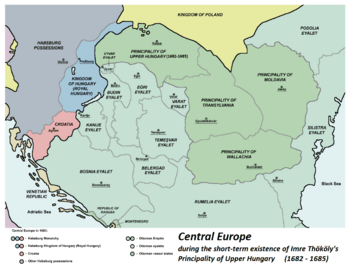
Ottoman rule on Hungary at its peak in 1683, including Budin, Egri, Kanije, Temesvar, Uyvar, and Varat eyalets. The semi-independent Principality of Transylvania was an Ottoman vassal state for the majority of the 16th and 17th centuries, the short lived Imre Thököly's Principality of Upper Hungary also became briefly a vassal state due to an anti-Habsburg Protestant uprising between 1682 and 1685.
|
|
| Common languages | Hungarian |
| Religion | Roman Catholicism Reformed Church in Hungary Islam |
| Demonym(s) | Hungarian |
| Government | |
| Beylerbey, Pasha, Agha, Dey | |
| History | |
| 1541 | |
|
• Recapture of Buda
|
1686 |
| 1699 | |
| Today part of | Hungary, Croatia, Serbia, Slovakia, Romania |
Ottoman Hungary was a part of the Kingdom of Hungary that was ruled by the Ottoman Empire. This period lasted for over 150 years, from 1541 until 1699. The Ottomans took control of the city of Buda in 1541. Later, the area was freed by the Habsburg leaders.
During this time, many South Slavic people, like Serbs and Bosniaks, moved north into the area. Many Hungarians who survived the Ottoman takeover left the region. The newly settled South Slavic people helped the Ottoman army with soldiers and food. Because of this, Hungarians sometimes called the Ottoman-ruled area "Rascia," which meant "Serbia."
Ottoman Hungary mostly covered the southern and central parts of what is now Hungary.
Contents
A Time of Change in Hungary
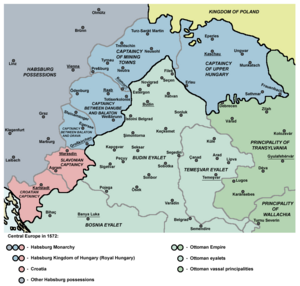
Hungary had been fighting the Ottoman Empire since the 1360s. The Kingdom of Hungary led many battles and sieges to stop the Ottomans. Hungary faced most of the Ottoman attacks in Europe during the 1400s. They successfully stopped the Ottoman advance for a while.
The Kingdom Weakens
After King Matthias of Hungary died in 1490, the power of the Hungarian kings became weaker. In 1521, Sultan Suleiman the Magnificent invaded Hungary. He captured Belgrade, an important border fortress. This fortress was seen as the key to Hungary's southern gate.
The Sultan then attacked the weakened Hungarian kingdom. In 1526, the smaller Hungarian army was defeated at the Battle of Mohács. King Louis II of Hungary died in this battle.
Hungary Divided
After the king's death, two groups claimed the Hungarian throne. The Austrian Habsburg family and the Hungarian noble Zápolya family both wanted to rule. King John I of Hungary ruled the eastern part, and the Habsburgs ruled the western part.
The Habsburgs tried to unite all of Hungary. But the Ottoman Empire stopped them by supporting the Eastern Hungarian Kingdom. When King John I died in 1540, Habsburg forces tried to take Buda, the Hungarian capital. Sultan Suleiman arrived with his army, defeated the Habsburgs, and captured Buda in 1541.
This event divided Hungary into three parts:
- Royal Hungary: The northwestern part, ruled by the Habsburgs.
- Ottoman Hungary: The central and southern parts, directly ruled by the Ottoman Empire.
- Principality of Transylvania: The eastern part, which became a semi-independent state. It was a vassal state of the Ottoman Empire, meaning it had to pay tribute and follow some Ottoman rules.
The border between these three areas became a battle line for the next 150 years.
End of Ottoman Rule
In 1686, Buda was finally taken back from the Ottomans. By 1687, the Hungarian parliament agreed that the Habsburgs would inherit the Hungarian crown. The Habsburg armies quickly pushed the Ottomans out of Hungary.
After the Ottomans lost the Great Turkish War, they officially gave up Ottoman Hungary. This was agreed in the Treaty of Karlowitz in 1699. Some remaining Ottoman territories in the south were taken by the Habsburgs between 1716 and 1718.
Life Under Ottoman Rule
During Ottoman rule, parts of Hungary were divided into provinces called Eyalets. These were further split into smaller areas called Sanjaks. Much of the land was given to Ottoman soldiers and officials. About 20% of the land was kept by the Ottoman state.
Ottoman Hungary was a border area, so it had many forts and soldiers. The long wars between Hungarians, Habsburgs, and Ottomans greatly reduced the Hungarian population. Many areas became empty. The Ottomans then settled many Orthodox Southern Slavic people there.
The region became less developed economically. It mostly used up Ottoman resources rather than bringing in wealth. While some people from other parts of the empire moved there, and some converted to Islam, most people were Orthodox Southern Slavs.
The Ottomans were generally tolerant of different religions. This tolerance allowed Protestantism to grow in eastern Ottoman Hungary. This was different from Royal Hungary, where the Habsburgs tried to stop Protestantism.
Changes in Population
For over 150 years, Hungary was a constant battlefield. This ongoing conflict stopped the population from growing. Many Hungarian towns and villages were destroyed. The wars, people being taken captive, and nobles leaving their lands caused the countryside to lose many people.
The number of ethnic Hungarians greatly decreased by the end of Ottoman rule. For example, the population of Buda did not grow for two centuries. The Ottoman rulers allowed the Hungarian royal palace to fall into ruins. It was later used to store gunpowder, which exploded during a siege in 1686.
Many Christian Hungarians moved to Habsburg-ruled Royal Hungary. By 1547, only about a thousand original Christian residents remained in Buda. By 1647, this number dropped to about seventy. The number of Jewish and Gypsy immigrants grew during Ottoman rule in Buda.
In cities that became Ottoman centers, the Christian population usually went down. From the early 1600s, Serbian refugees became the majority in large parts of Ottoman Hungary.
Historians estimate that Hungarians made up about 75-80% of the population in the Carpathian Basin in the late 1400s. Non-Hungarians were about 20-25%. The Hungarian population began to shrink after the Ottoman conquest. This was due to constant wars, Ottoman raids, famines, and diseases. The main war zones were in Hungarian-inhabited areas, causing more deaths there.
Economy and Trade
Life for people in Ottoman Hungary was often unsafe. Peasants sometimes fled to forests and marshes, forming groups of fighters called Hajdú.
Despite the challenges, some parts of the economy did well. In the large empty areas, people raised cattle. These cattle were sent to southern Germany and northern Italy. In some years, 500,000 cattle were exported. Wine was also traded to the Czech lands, Austria, and Poland.
Culture and Religion
Even with constant fighting, several Muslim cultural centers appeared in Ottoman Hungary. Examples of Ottoman architecture were built, including mosques, bridges, fountains, baths, and schools. Most of these were destroyed after the Habsburgs took back the land.
The introduction of Turkish baths was a lasting change. About 75 hammams (steam baths) were built during the Ottoman period.
Schools and Learning
In the 16th and 17th centuries, there were at least five Bektashi convents (religious centers) in Hungary. Many elementary schools (mekteb) and secondary religious schools (medrese) operated in major towns.
Elementary schools taught writing, basic math, and reading the Koran and important prayers. Medreses offered higher education in Muslim religious studies, law, and natural sciences. The most famous medrese was in Budin (Buda). Libraries also helped spread knowledge and culture.
Religious Tolerance

The Ottomans generally allowed people to practice their own religions. Christianity was not forbidden. Islam was not forced upon people. However, some historians say that the Ottomans used other ways to slowly change people's beliefs.
This religious tolerance helped Protestantism in Hungary survive. In Habsburg-ruled areas, Catholics often tried to stop Protestants.
About 80,000 Muslim settlers lived in Ottoman Hungary. They were mostly administrators, soldiers, artisans, and merchants. Their religious life was guided by mosques, which were either new buildings or old Christian churches. The Ottoman state or charities paid for mosque staff and church upkeep.
Besides the main branch of Islam (Sunni Islam), other Muslim groups like the bektashis and halvetis also thrived. The famous Gül Baba monastery in Budin (Buda) housed 60 dervishes (religious figures). Gül Baba's tomb is still a significant Islamic site today.
By the end of the 1500s, about 90% of the people in Ottoman Hungary were Protestant, mostly Calvinist. Some Muslim Roma people settled in the region. After the Habsburgs took back Pécs, many Muslims converted to Catholicism.
Images for kids
See also
- Islam in Hungary
- Magyarabs
- Ottoman–Habsburg wars
- Transformation of the Ottoman Empire#Hungary - on the Ottoman defensive system in Hungary.


